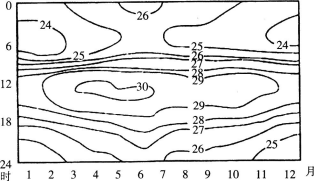Of all the changes that have taken place in English-language newspapers during the past quarter-century, perhaps the most far-reaching has been the inexorable decline in the scope and seriousness of their arts coverage.
It is difficult to the point of impossibility for the average reader under the age of forty to imagine a time when high-quality arts criticism could be found in most big-city newspapers. Yet a considerable number of the most significant collections of criticism published in the 20th century consisted in large part of newspaper reviews. To read such books today is to marvel at the fact that their learned contents were once deemed suitable for publication in general-circulation dailies.
We are even farther removed from the unfocused newspaper reviews published in England between the turn of the 20th century and the eve of World War II, at a time when newsprint was dirt-cheap and stylish arts criticism was considered an ornament to the publications in which it appeared. In those far-off days, it was taken for granted that the critics of major papers would write in detail and at length about the events they covered.Theirs was a serious business, and even those reviewers who wore their learning lightly, like George Bernard Shaw and Ernest Newman, could be trusted to know what they were about. These men believed in journalism as a calling, and were proud to be published in the daily press. "So few authors have brains enough or literary gift enough to keep their own end up in journalism," Newman wrote, "that I am tempted to define 'journalism' as a term of contempt applied by writers who are not read to writers who are."
Unfortunately, these critics are virtually forgotten. Neville Cardus, who wrote for the Manchester Guardian from 1917 until shortly before his death in 1975, is now known solely as a writer of essays on the game of cricket. During his lifetime, though, he was also one of England's foremost classical-music critics, a stylist so widely admired that his Autobiography (1947) became a best-seller. He was knighted in 1967, the first music critic to be so honored. Yet only one of his books is now in print, and his vast body of writings on music is unknown save to specialists.
Is there any chance that Cardus's criticism will enjoy a revival? The prospect seems remote.
Journalistic tastes had changed long before his death, and postmodern readers have little use for the richly upholstered Vicwardian prose in which he specialized. Moreover, the amateur tradition in music criticism has been in headlong retreat.
What would be the best title for the text?
- A.Newspapers of the Good Old Days
- B.The Lost Horizon in Newspapers
- C.Mournful Decline of Journalism
- D.Prominent Critics in Memory
正确答案及解析
正确答案
解析
主旨题。本文开头即提到英国报纸的艺术评论的衰退趋势,第二、三段回顾20世纪初期至二战前夕艺术评论的盛况,第四、五段说盛况不在,且复兴前景渺茫。整篇文章都在传达一个信息:报刊艺术评论逐渐从公众视野中消失,因此B项为正确答案。B项用了比喻手法,the horizon指“公众视野中的报刊艺术评论”,lost指“衰落”,并涵盖了两大主题词“艺术评论”和“衰落”。A项中心词为“报纸”,C项中心词为“新闻业”,D项中心词为“评论家”,均不是对文章主题的正确概括。
包含此试题的试卷
你可能感兴趣的试题
根据下面资料,回答题
菊花的花期在秋季,是一种短日照植物。只有当日照长度短于其临界昼长(一般小于12小时)时才开花,否则只进行营养生长。在广州市郊,有一个著名的菊花种植基地,每年进入11月后。每当夜幕降临,菊花田中数以万计的灯泡便全部亮起,形成一道独特的长达一个多月的“灯海照菊”奇观。据此回答以下问题。
与广州、北京、天津等知名花卉城市相比,郑州成为我国南花北调、东花西走的大型花卉集散地的独特优势是()。查看材料
-
- A.技术
- B.信息通达
- C.位置
- D.交通
- 查看答案
根据下面资料,回答题
菊花的花期在秋季,是一种短日照植物。只有当日照长度短于其临界昼长(一般小于12小时)时才开花,否则只进行营养生长。在广州市郊,有一个著名的菊花种植基地,每年进入11月后。每当夜幕降临,菊花田中数以万计的灯泡便全部亮起,形成一道独特的长达一个多月的“灯海照菊”奇观。据此回答以下问题。
下列城市栽种同种菊花,自然状态下开花最早的是()。查看材料
-
- A.南昌
- B.北京
- C.广州
- D.南京
- 查看答案
根据下面资料,回答题
菊花的花期在秋季,是一种短日照植物。只有当日照长度短于其临界昼长(一般小于12小时)时才开花,否则只进行营养生长。在广州市郊,有一个著名的菊花种植基地,每年进入11月后。每当夜幕降临,菊花田中数以万计的灯泡便全部亮起,形成一道独特的长达一个多月的“灯海照菊”奇观。据此回答以下问题。
广州市郊夜间的灯海照菊蔚为壮观,主要目的是()。查看材料
-
- A.方便游客夜间赏菊
- B.提前菊花开放时间
- C.降低菊花的患病率
- D.延迟菊花开放时间
- 查看答案
下图为某地一年中气温日变化的分布图,读图回答题。

有关该地的描述正确的是()。查看材料
-
- A.雨热不同期,适合葡萄、油橄榄生长
- B.乳畜业高度发达
- C.终年炎热干燥,居民喜欢穿白色长袍
- D.动物善于奔跑,有季节性迁移
- 查看答案
下图为某地一年中气温日变化的分布图,读图回答题。

图中能够说明该地气候干燥,陆地吸热增温迅速的时段是()。查看材料
-
- A.1月0~6时
- B.3月7~12时
- C.7月9~15时
- D.10月12~18时
- 查看答案